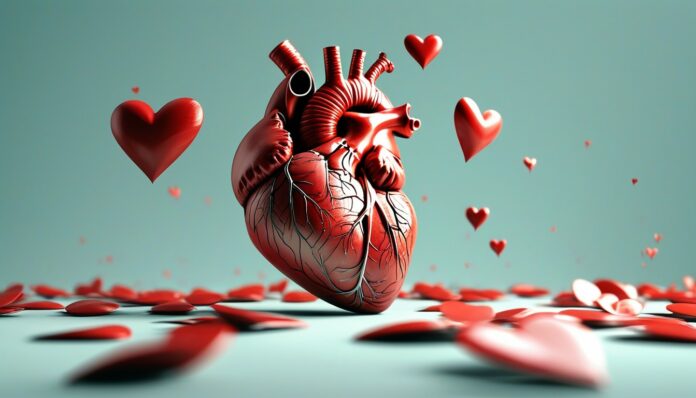The human heart tirelessly pumps blood throughout our lives. This incredibly resilient muscle is a complex biological “engine” that sustains our existence. It’s essential to take good care of it—harming your heart is easy, but restoring its health is much more challenging.
Facts About the Human Heart:
- On average, men’s hearts are slightly larger than women’s. A man’s heart weighs about 310 grams, while a woman’s heart weighs around 240 grams.
- Heart cells cannot regenerate, meaning the muscle tissue of the heart cannot recover after damage.
- About 5% of the blood in our body is used to maintain the heart’s own function.
- When we sneeze, the heart momentarily stops, which can be observed on medical devices.
- The heart supplies blood to all of our organs except the corneas of the eyes, covering more than 80 trillion cells!
- The human heart has 4 chambers, while a cockroach’s heart has 13. Interestingly, the cockroach’s heart inspired the design of a prototype artificial heart for humans.
- With each contraction, the human heart pumps an average of 60 milliliters of blood. This amounts to 420 milliliters per minute, over 25 liters per hour, 600 liters per day, and more than 200,000 liters per year.
- The average length of the human heart is 12.7 centimeters, and its width is 7.5 centimeters.
- More people have died from heart disease throughout history than from all wars combined.
- The heart generates its own electrical impulses, allowing it to beat even outside the body—provided it has an adequate supply of oxygen.
- During moments of extreme stress, the heart rate can reach 200-250 beats per minute. In such a state, the heart muscle can circulate over 40 liters of blood per minute.
- The heart rate of a fetus is twice that of an adult, approximately 150 beats per minute. By the time the fetus is 12 weeks old, its heart is already pumping over 60 liters of blood per day.
- In 10 minutes, the heart can perform enough work to lift a 65-kilogram person 10 meters into the air.
- The heart generates enough energy in one day to power a car for 32 kilometers. Over a lifetime, it could drive a car to the moon and back.
- Laughter can increase blood flow by 20%, as it relaxes the walls of blood vessels.
- Ancient Egyptians believed that the heart and other internal organs could be moved within the body through willpower.
- With each “beat,” the heart rhythmically contracts and relaxes. First, the atria contract, pushing blood into the ventricles, which then send the blood into the aorta and pulmonary arteries.
- The average human heart beats at a rate of 72 beats per minute. Over a 65-year lifespan, the heart can beat 2.5 billion times. There are moments of rest for the heart—it “rests” between beats. Over a lifetime, the heart “rests” for about 20 years.
- In the early 19th century, French doctor René Laennec invented the stethoscope after receiving complaints from female patients who were uncomfortable with him placing his ear on their chest to listen to their heartbeat.
- The world’s first heart transplant was performed in South Africa in 1967. Although the surgery was successful, the patient only lived for 18 days after the operation.
- An ordinary person’s resting pulse is around 70 beats per minute, while an athlete’s is about 42 beats per minute.
- In extremely rare cases, some people are born with a second heart. However, this is not advantageous, as the second heart is usually underdeveloped, and the person will die if either heart stops.
- Researchers are currently exploring the possibility of transplanting animal hearts, such as those from pigs, into humans, using genetically engineered donor organs grown in laboratory animals.
- Women’s heart rates are generally faster than men’s, though only by about 10-12%.
- The ancient Roman physician Galen believed that the heart produced blood. It wasn’t until 1616 that Irish biologist William Harvey proved that the body’s blood supply is finite and circulates in a loop.
- The heart is actually located not entirely in the left side of the chest but almost between the lungs, closer to the center. However, it is still nearer to the left side than the right.
